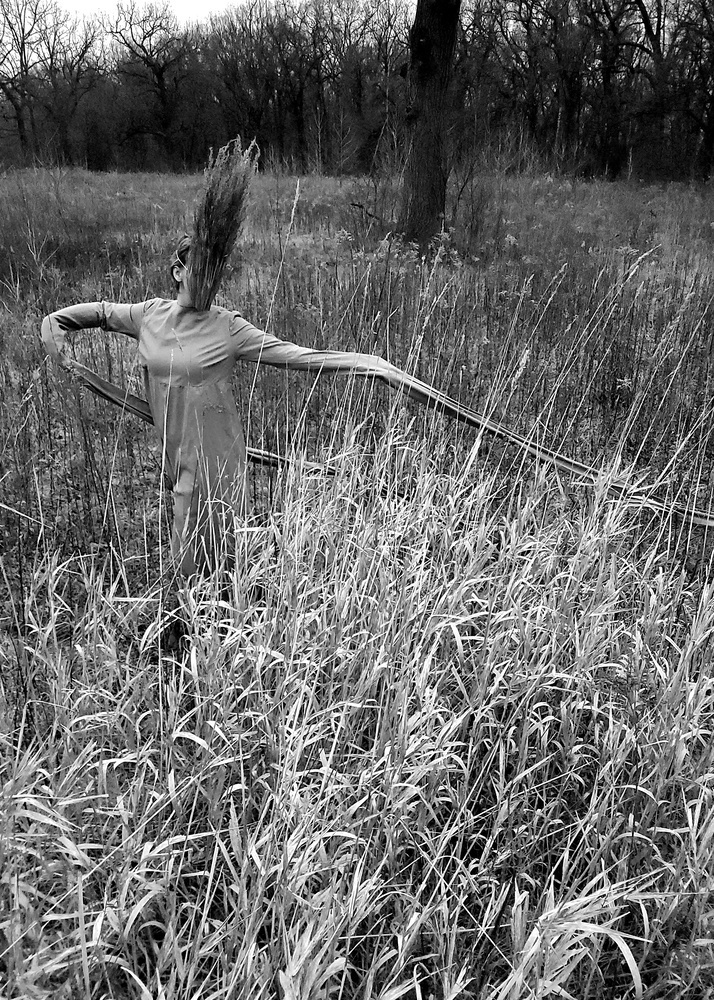
OBJECTS FOR ASSISTED SEED DISPERSAL
first performed on November 14, 2020
A meadow in Palmer Park
performed once in 2020
KRISTINA SHEUFELT
Dynasty Norwood, fiber artist
Detroit, Michigan
163051041k163051041s163051041h163051041e163051041u163051041f163051041e163051041l163051041@163051041u163051041m163051041i163051041c163051041h163051041.163051041e163051041d163051041u
www.kristinasheufelt.com
OBJECTS FOR ASSISTED SEED DISPERSAL
KRISTINA SHEUFELT
The inauguaral performance of “Objects for Assisted Seed Dispersal” was something of an experiment to test the efficiency of the objects: a dress-like garment with disproportionately long sleeves, and a tall face mask made of native grasses harvested from within the city.
As I moved through the meadow, the long sleeves dragged over dormant plants, picking up bur seeds which rely on the movement of humans and animals to spread. Burs are adapted to cling to fur and clothing, particularly natural fibers, so the garment was made of wool. Each stumble or gust of wind activated the mask, knocking loosely-tethered grass seed to the ground around me. My movement through the landscape constituted a constant exchange, a seed-sowing dance of which my body, the objects, and the plants were all a part.
The garment acted both as a tool for seed distribution and an unconventional sampling device. After each performance, I was able to count and identify any burs that had been picked up, noting and removing invasive species before moving to a new site to allow them to detach and be dispersed.
“Seed Dispersal” explores ecological participation as performance, conservation as meditation. The garment and mask were designed to obscure and blend my features into the meadow, as well as to render my main exploratory senses useless; without my sight or the use of my hands, I was both vulnerable to and dependent on the landscape around me. A silent, faceless character, I portrayed both myself as an element of the living landscape, and a generic surrogate onto which an ecologically curious audience might project itself.
The initial performance was intentionally executed during the winter, both to ensure the maturity of bur-bearing plants targeted for assisted dispersal, and as a symbolic activation of the dormant landscape. The ecological engagements of most people, especially in the city, are often limited to the growing season, when plant and animal life are more abundant and accessible. But there is still work to be done in winter, and there are still ways to nurture the plants and the landscape as they sleep. In doing this, a deeper bond with the land is born and sustained as new plants emerge to bear seeds.